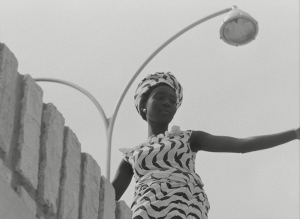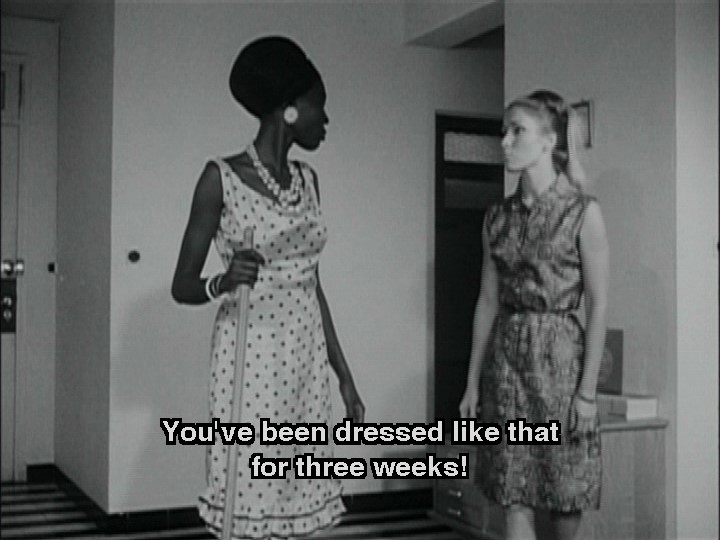

#La noire de full#
La noire de. is full of symbolic and metaphorical objects, but perhaps the most multifaceted is the African mask which we first see hanging in the middle of a spartan white wall as she enters the French home. Sembène saw cinema as a political tool, and when posed the question of whether the concession bothered him, he responded, as most activists would, that concessions must sometimes be made in order for action to take place (1969, 10).ĭiouana has arrived in France to work for and live in the French home of a white couple for whom she had previously worked in Senegal (they are known simply as Madame and Monsieur). Language is a major concern of the film Diouana is built as a character who does not speak French, but because of the influence of the money behind the film, Diouana even thinks her thoughts in French. Securing the budget for the film required that he relinquish his original plan of shooting in the Wolof language in favor of French in order to appease the French funders (Hennebelle 1969, 12). The film itself, made six years after Senegal acquired independence from France, is deeply antagonistic towards neocolonialism, but the production was nevertheless haunted by colonialist concession. Shot mostly on hand-held 16mm, it is grainy and definitely low-budget, but it has a distinctly coordinated and arranged mise-en-scene, and the short running time has no fat on it. All of these qualities can be applied to this, his first feature film. Michael Atkinson notes that Sembène's “films are simple but never simplistic, lowbrow but unsensational, fastidiously realistic and yet unconcerned with sustaining illusion” (Atkinson 2001).

Ousemane Sembène was possibly the most famous African filmmaker, and La noire de. is often credited as being the first Sub-Saharan African feature film, or at the very least the first to gain any kind of international recognition. Because I find it much more relevant to the topics in which Sembène had interest, in this close reading of the film, I will be using the original title from this point on when referring to the film. This is invested with further complexity by the specifically anti-colonialist commentary which the film makes that is, when her actual point of origin is transformed by colonial rule, down to the socially foundational elements of language and currency, which culture is it that Diouana most identifies with? She cannot know a Senegal without the now-ingrained French influence. Diouana, the “black girl,” is both ambiguously “of” someone and “of” someplace, but the exact people or places to which she belongs are left vague. In speaking about the black diaspora, the original title poetically signals the confusion, separation, and dislocation that is a part of the movement of people from one place to another. Considering Sembène's difficulties with the producers of the film, the translation likely was, as is often the case, a dumbing down for Western audiences or, perhaps just as possible, a stark exoticizing by those same producers. As she exits the ship, she wonders, “Will someone be there for me?” The spare title sequence – no music and white block lettering – announces the film title: La noire de., or, The black girl of. For a great deal of time, I searched for an explanation as to why the English-language title was changed from the ambiguous original to the very blunt Black Girl, but I couldn't find the history behind it.

This particular ship bears the black girl of the title, Diouana, who has arrived from her hometown of Dakar, Senegal.

It is also symbolic of the slavery and oppression that was shuttled around the world on such ships over the past millennium. The large Western ship is a loaded image in diasporic studies it is a symbol of power and majesty, the mass movement of peoples, and control of geographic space by Western civilizations. The first image of Ousmane Sembène's Black Girl (1966, France/Senegal) is a highly relevant one: a large white cruise ship slices across a small French harbor, its horn bellowing to announce its arrival.


 0 kommentar(er)
0 kommentar(er)
